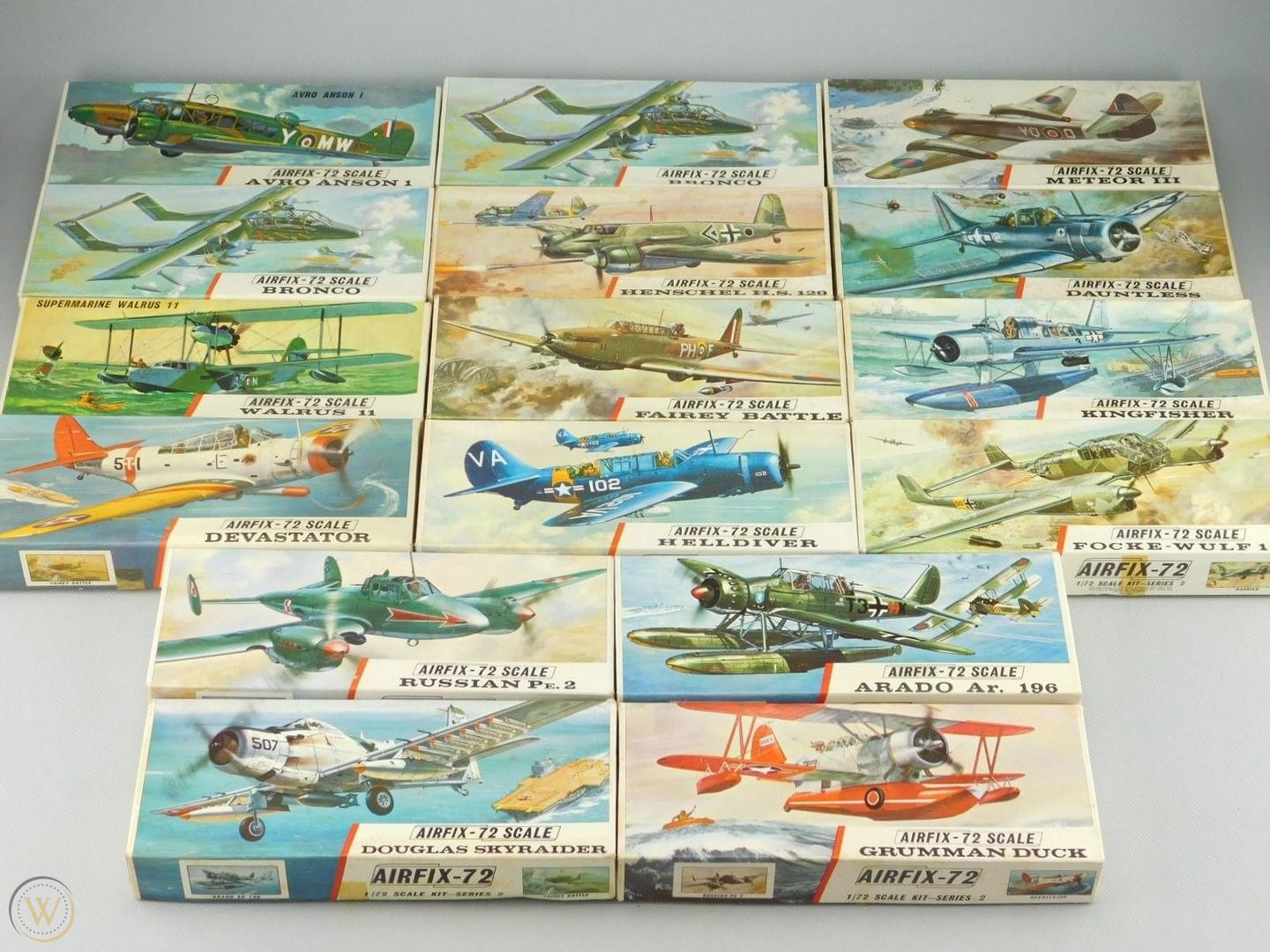A handful of the most enduring toys from the 1960’s and 1970’s
From modelling kits to coiled springs, murder mystery games and infuriating puzzles the 60’s and 70’s spawned some ingenious and enduring toys.
Airfix
Who doesn’t remember Airfix models, the plastic kit modelling hobby that surged in popularity during the 1960’s and 1970’s? But did you know it was invented by a Hungarian refugee living in Britain in 1939?
Just before the outbreak of World War II, a Hungarian named Nicholas Kove was manufacturing inflatable rubber toys in Britain. He named his company Airfix because part of the process involved fixing air into products.
After the war in 1947, Airfix switched to producing plastic combs and Kove was the first manufacturer in the UK to introduce an injection moulding machine.
Wanting a model for their sales reps to give away, the tractor manufacturer Ferguson approached Airfix in 1949 to make a cheap model of one of their tractors. Airfix subsequently produced them as unmade kits with instructions. These kits soon came to the attention of F W Woolworth who suggested using more stable polystyrene plastic and packaging them in poly bags with a header card which would make them cheaper again. The Airfix models took off with the Golden Hind being launched in 1952 and the famous spitfire model appearing a year later.
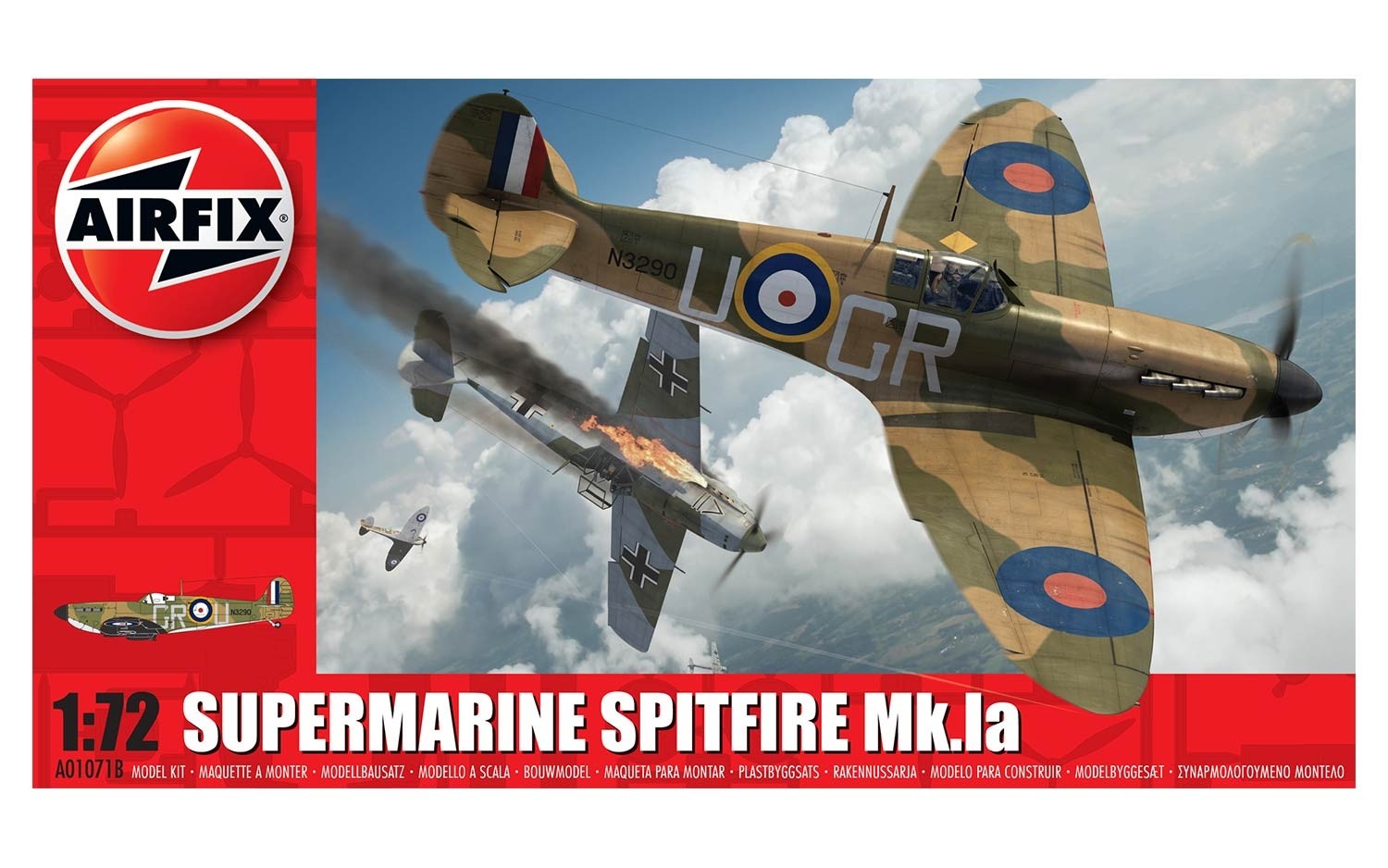
The Airfix models grew in popularity and by the 1970’s the range had expanded to include trains, military vehicles, engines, rockets, warships, large classic ships, liners, vintage and modern cars, motorbikes, spaceships and even figures.
Now under the ownership of Hornby Hobbies Ltd, Airfix models prove to be enduring and still much loved. And with plenty of new and exciting models in the pipeline hopefully it will still be around for decades to come.
Did you have an airfix model as a child? Which was your favourite?
Slinky
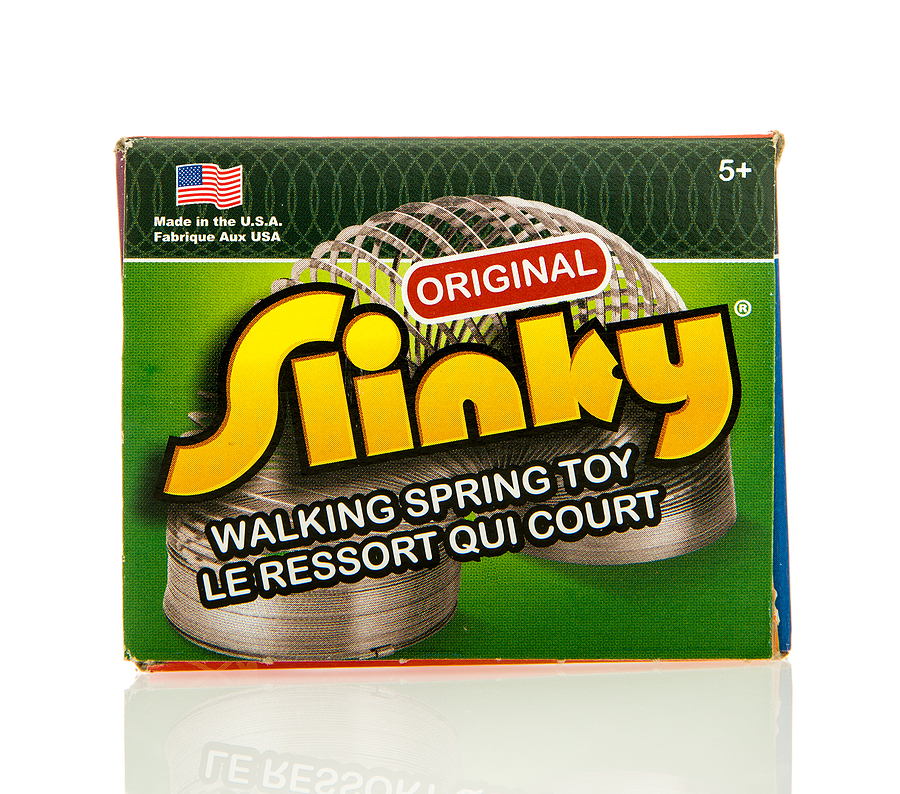
The Slinky was an American invention that came about by accident. In 1943 mechanical engineer Richard James was working on a suspension system with tension springs that could keep sensitive ship equipment steady at sea when he accidentally knocked some samples off a shelf. To his amazement instead of falling the spring gracefully ‘walked’ down the shelf.
Although the toy was made commercially in 1945 the Slinky did not find fame until a public demonstration in Gimbel’s department store in Philadelphia where the toy became an instant hit and quickly sold out.
The way the Slinky automatically stepped down stairs, apparently defying gravity was only part of its appeal. It was simple to use, tactile and mesmerising too.
With no paint, no gimmicks just a length of coiled steel, Slinky is a toy that has endured with generation upon generation able to relate to the Slinky.
Did you own a Slinky? Do you remember the jingle that accompanied the TV advert?
Mastermind
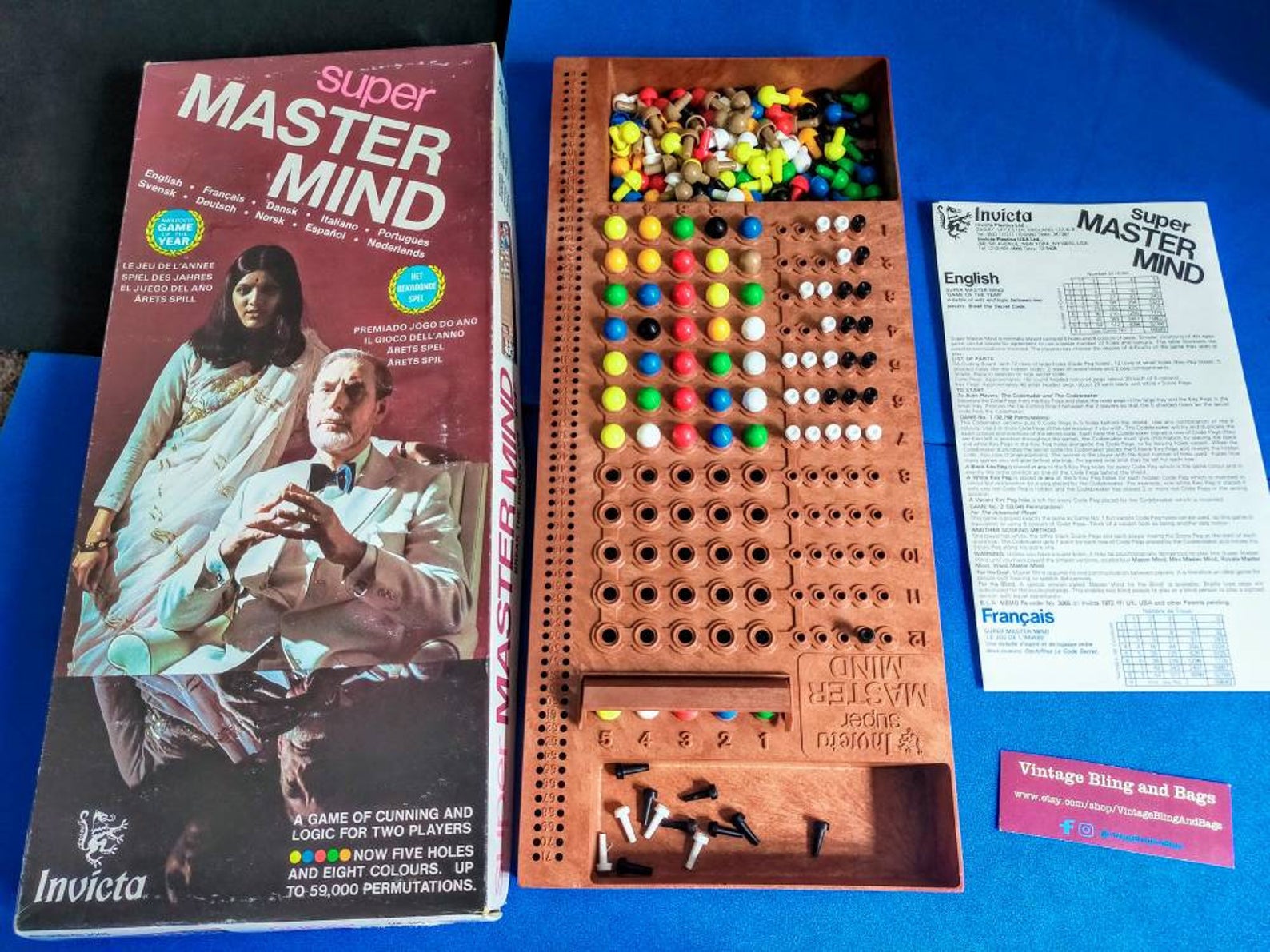 Mastermind was invented in 1970 by an Israeli postmaster and telecommunications expert called Mordecai Meirowitz. It is an infuriating puzzle game where you have to crack the code by matching four different coloured plastic pins set in a brown plastic board.
Mastermind was invented in 1970 by an Israeli postmaster and telecommunications expert called Mordecai Meirowitz. It is an infuriating puzzle game where you have to crack the code by matching four different coloured plastic pins set in a brown plastic board.
One player secretly puts four coloured pegs in the spaces behind a screen at once end of the game board. The other player, the code breaker, makes a series of guesses. After each guess, the code maker uses smaller pegs to tell the code breaker if their guessed pegs are the right colour and in the right place, are the right colour but the wrong place, or are the wrong colour entirely. The code breaker makes another guess in the next row, building upon information from previous guesses, trying to match the pegs the code maker hid at the beginning of the game.
First sold in 1972 Mastermind was hugely popular and became game of the year in 1973.
Did you play Mastermind with your family? Were you ever able to crack the code?
Cluedo
 First manufactured by Waddingtons in 1949 and largely based on a parlour game called ‘Murder’, Cluedo was invented by a British law clerk named Anthony Pratt from Birmingham.
First manufactured by Waddingtons in 1949 and largely based on a parlour game called ‘Murder’, Cluedo was invented by a British law clerk named Anthony Pratt from Birmingham.
Pratt, who worked in a local munitions factory during the war, invented the suspects and weapons between 1943 and 1945, as a way to pass the long nights stuck indoors during air-raid blackouts.
In 1947, Pratt patented the game and sold it to Waddingtons and its American counterpart, Parker Brothers (now owned by Hasbro). But because of post-war shortages the game was not released until 1949—as Cluedo in England and Clue in the United States.
The game has sold over a hundred and fifty million copies and is still one of the top ten board games.
Profits from the popular game allowed Pratt to become a pianist, his long-time dream.
Characters have evolved through the decades to keep up with fashion, hairstyles and pop-culture trends. Versions sold in the 1960s had animated-looking characters, mirroring the growing popularity of Saturday morning cartoons, and the 1980s versions adopted the slick style of the decade.
Which version did you have in your family? Which character was your favourite? Do you still play it today?
Battleships
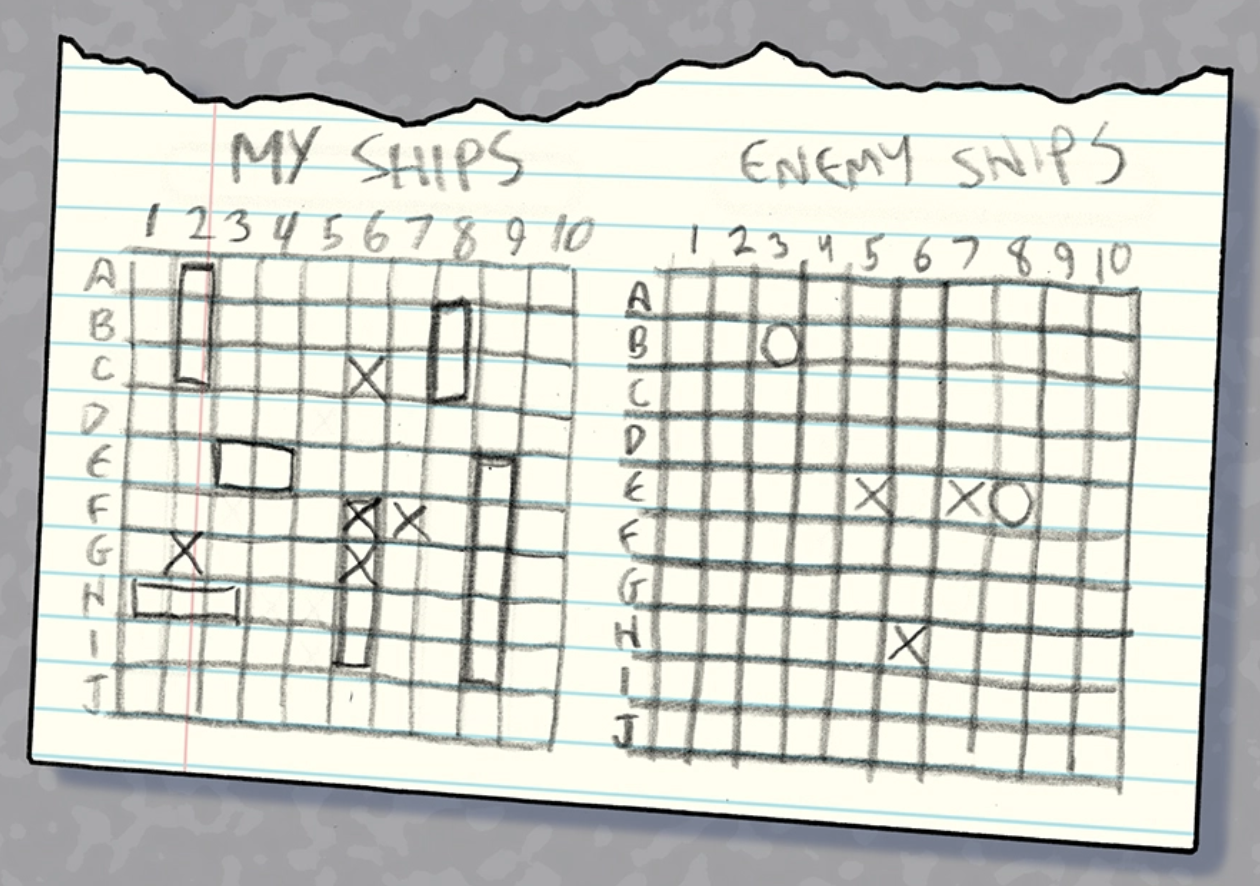 Battleships, the 2-player guessing game where the object is to sink your opponent’s players before he sinks yours, was originally a pen and paper game which appears to predate World War I.
Battleships, the 2-player guessing game where the object is to sink your opponent’s players before he sinks yours, was originally a pen and paper game which appears to predate World War I.
Released in 1943 by Milton Bradley as a pad and pencil game called ‘Broadsides, the Game of Naval Strategy’ by 1967 it had evolved into the iconic Battleship board game version forgoing paper for plastic grids and ships with coloured pegs to record hits and misses.
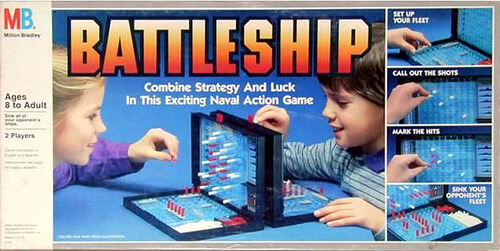
The original 1967 version remained largely unchanged for the first ten years until the release of the Electronic Battleship in 1977 followed by the Electronic Talking Battleship in 1989. The Battleship game has proved so popular over the years that in 2012 it was even inspiration for a movie of the same name starring Liam Neeson.
These days, Hasbro, the game’s current manufacturer, offers a range of Battleship options from card games to iPad and online versions and it remains as popular as ever.
Did you play a Battleships board game as a child or did you use pen and paper to play?
Melina - Assistant Editor
Latest posts by Melina - Assistant Editor (see all)
- Top tips for hay fever sufferers - April 14, 2024
- Paysan Breton Cream Cheese Breakfast Wraps - April 12, 2024
- 4 Homemade Sweet Treats for Easter - March 24, 2024
- Playground Memories - March 10, 2024
- The invasion of the duvet: the ’10-second bed’ - February 20, 2024









